Introduction to SEO and Keyword Strategy
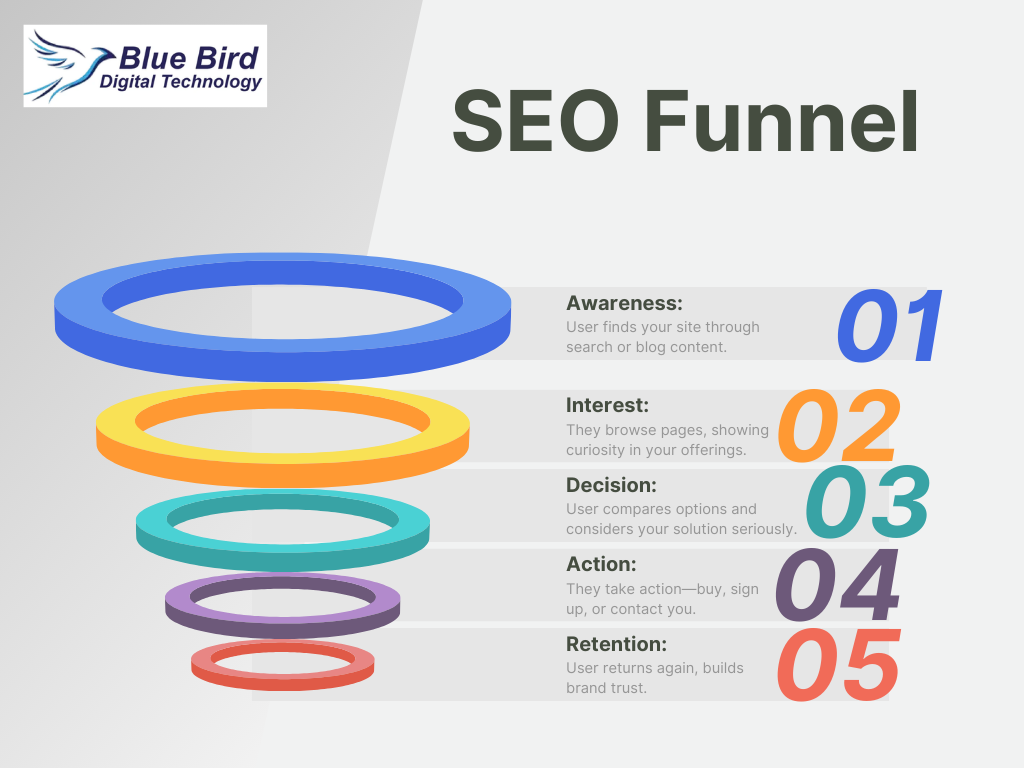
1.1 What is SEO?
Search Engine Optimization (SEO) is the process of improving your website so it ranks higher in search engine results (Google, Bing, etc.), ultimately driving more organic (non-paid) traffic.
1.2 What is a Keyword Strategy?
A keyword strategy is a plan for how you use keywords (the words people type into Google) across your content to:
-
Improve search rankings
-
Match user intent
-
Drive traffic
-
Increase conversions
It’s not just about choosing popular words. It’s about selecting the right keywords, organizing them properly, and using them strategically across your website.
✅ Keyword Strategy Goals:
-
Understand what your audience is searching for
-
Use keyword data to guide your content
-
Rank for both broad and long-tail keywords
-
Increase visibility and authority in your niche
📘 Chapter 2: Types of Keywords and Search Intent
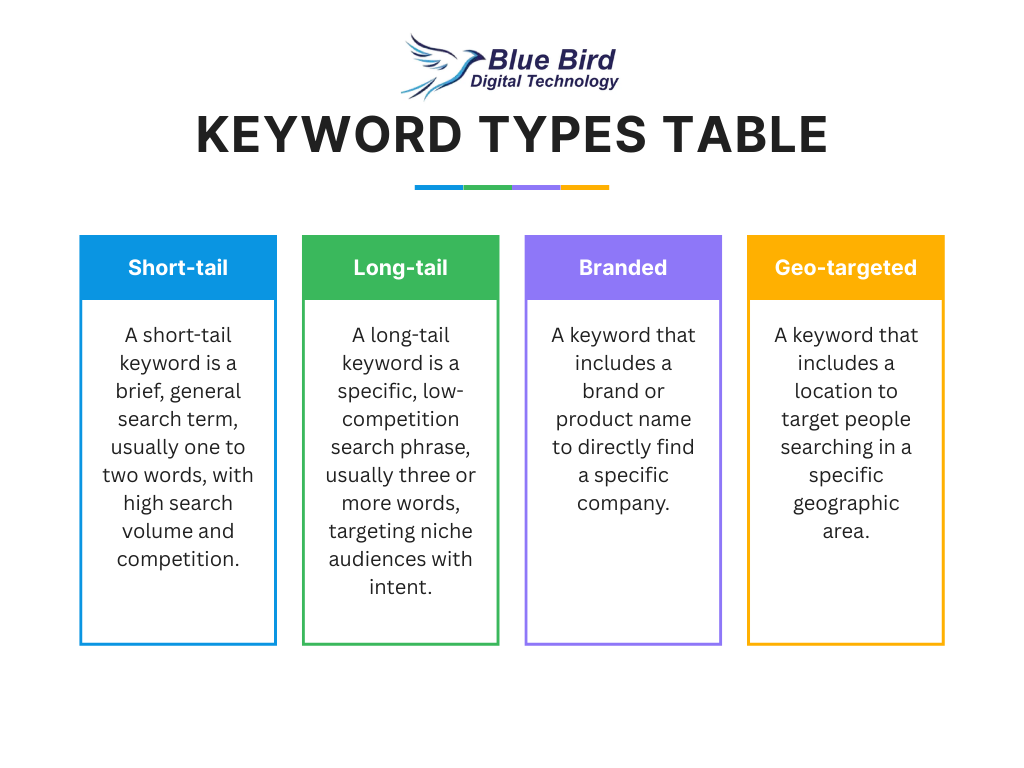
2.1 Types of Keywords:
| Type | Example | Purpose |
|---|---|---|
| Short-tail | shoes | Broad reach, low conversion |
| Long-tail | waterproof hiking shoes for men | Low volume, high conversion |
| Branded | Nike running shoes | Brand visibility |
| Geo-targeted | digital marketing agency in Pune | Local SEO |
| Informational | how to tie a tie | Educates user |
| Transactional | buy laptops under 50000 | Leads to purchase |
2.2 What is User Intent?
User intent is why someone is searching. Google is obsessed with understanding this.
-
Informational – Looking for answers (“how to”, “what is”)
-
Navigational – Want to find a brand or site (e.g., “Amazon login”)
-
Transactional – Ready to buy or convert (“buy iPhone 15 online”)
-
Commercial Investigation – Research before purchase (“best phone under 30k”)
📘 Chapter 3: Keyword Research Tools and How to Use Them

3.1 Why Tools Matter
Without the right tools, keyword research is like searching in the dark. Tools help you:
-
Discover keyword volume and trends
-
Understand competition levels
-
Analyze your competitors
-
Track ranking performance
3.2 Free Tools
-
Google Keyword Planner: Great for volume estimates and ad targeting
-
Google Search Console: Shows actual keywords you’re already ranking for
-
Google Trends: Identifies seasonality and topic popularity
-
AnswerThePublic: Visualizes questions people ask related to your topic
3.3 Paid Tools
| Tool | Best For | Features |
|---|---|---|
| Ahrefs | Backlinks, competitive analysis | SERP overview, traffic estimates |
| SEMrush | Site audits + PPC + content gap | Keyword magic tool |
| Moz | Difficulty scoring | Keyword suggestions, site crawl |
| Ubersuggest | Budget-friendly keyword research | Keyword ideas, SEO difficulty |
🧠 Pro Tip: Use a combo — free tools for discovery, paid tools for deep analysis.
📘 Chapter 4: Building Your Keyword List Like a Pro
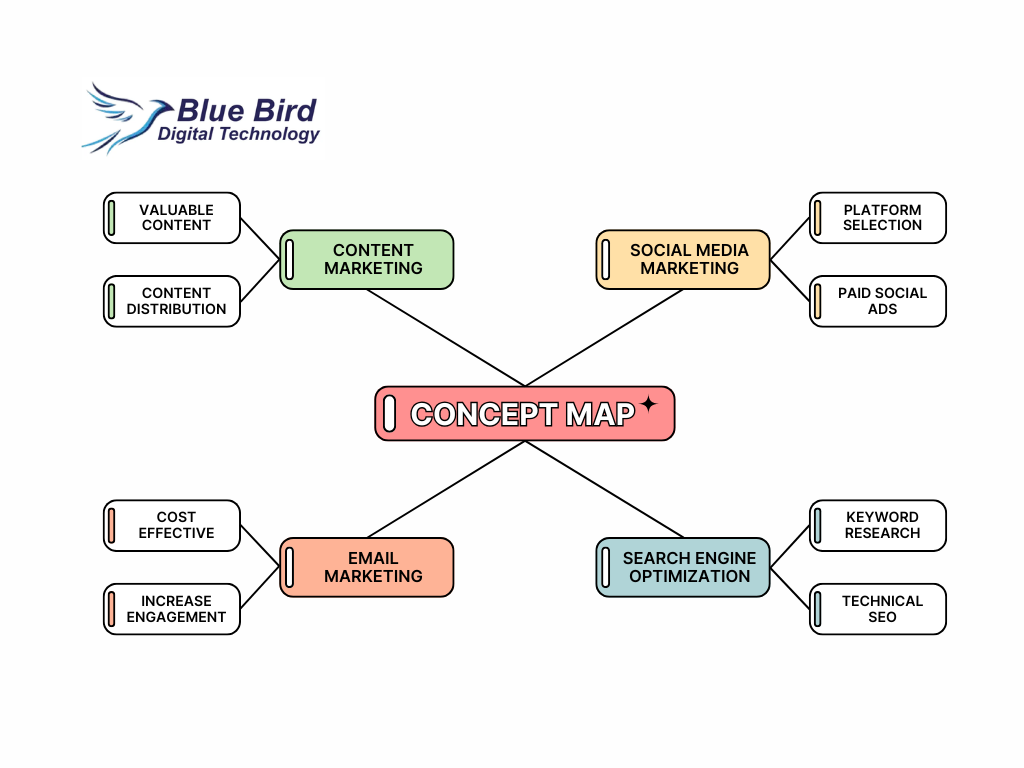
4.1 Start with “Seed Keywords”
Seed keywords are the basic terms relevant to your business. For example, if you sell shoes, your seed terms might be:
-
Running shoes
-
Formal shoes
-
Kids’ shoes
From there, expand into variants and long-tail terms.
4.2 Expand Your List
Use tools to generate:
-
Synonyms & variations
-
Question-based terms
-
LSI (Latent Semantic Indexing) keywords
-
Autocomplete suggestions from Google
4.3 Organize by Intent & Topic
Segment your list:
-
Informational vs. Transactional
-
Product-focused vs. Blog-focused
-
Location-based vs. global
📊 Example Format:
| Keyword | Intent | Volume | Difficulty | Page Type |
|---|---|---|---|---|
| best gaming laptop under 60k | Transactional | 22,000 | Medium | Product review |
| how to choose gaming laptop | Informational | 5,000 | Low | Blog/Guide |
📘 Chapter 5: Keyword Mapping and Website Architecture
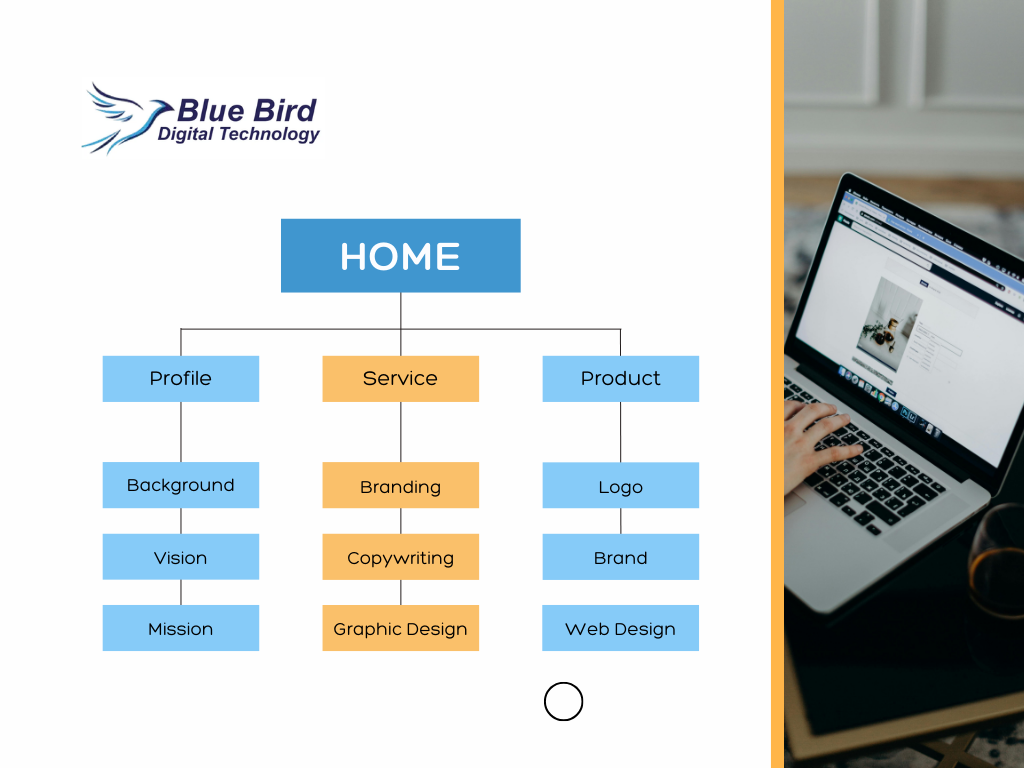
5.1 What is Keyword Mapping?
It’s the process of assigning specific keywords to specific pages to:
-
Avoid duplicate targeting (keyword cannibalization)
-
Ensure every important term has a place
-
Build a logical structure for users and bots
5.2 Mapping by Content Type
| Page Type | Target Keyword Type |
|---|---|
| Homepage | Branded, broad category terms |
| Product Category | Commercial keywords |
| Individual Product | Transactional, long-tail |
| Blog Posts | Informational, how-to keywords |
| Location Pages | Geo-targeted, service-based |
5.3 URL, Title, and Metadata Alignment
For every page:
-
Include the main keyword in the URL, H1, and title tag
-
Use supporting keywords naturally in H2s and content
-
Write a compelling meta description with primary terms
✅ Example:
-
URL:
www.example.com/blog/seo-keyword-strategy -
H1: “Ultimate SEO Keyword Strategy for Beginners”
-
Meta Description: “Learn how to research, organize, and use keywords to rank higher in search results.”
📘 Chapter 6: On-Page Optimization with Keywords
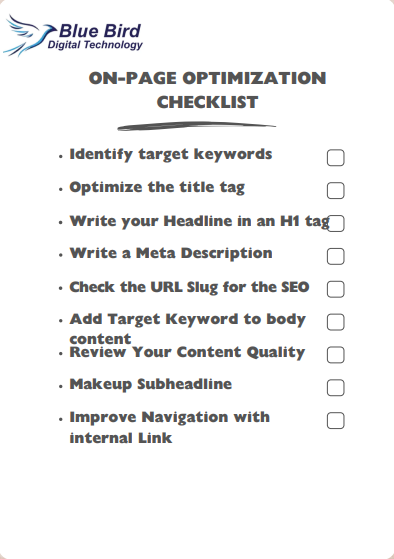
6.1 What is On-Page SEO?
On-page SEO is the practice of optimizing individual web pages to rank higher in search engines and attract more organic traffic. This involves using keywords effectively within your content and meta-data.
6.2 Key Elements for On-Page Optimization:
-
Page Titles: Include your main keyword at the beginning of the title. Keep it under 60 characters.
-
Example: “Best Running Shoes for Women | Top Picks in 2025”
-
-
Meta Descriptions: Write compelling descriptions that include your target keyword and invite users to click. Keep it under 160 characters.
-
Example: “Shop the best running shoes for women, designed for comfort and performance. Check our top picks for 2025!”
-
-
Headings (H1, H2, H3, etc.): Use keywords in H1 for the main title and subheadings (H2, H3) for content structure.
-
H1: “Best Running Shoes for Women in 2025”
-
H2: “Why Comfort Matters in Running Shoes”
-
-
Content Body: Use keywords naturally throughout the body. Avoid keyword stuffing. Aim for semantic relevance — using related terms and phrases.
-
Image Optimization: Name image files descriptively and use alt text with relevant keywords.
-
Example: “running-shoes-women.jpg” and alt text “Comfortable running shoes for women with arch support.”
-
-
URL Structure: Make URLs simple, descriptive, and include the primary keyword.
-
Example:
www.example.com/running-shoes-for-women
-
6.3 Internal Linking Strategy:
Internal links help distribute page authority and guide users to related content. Link to important pages within your site using relevant anchor text.
-
Example: “Check out our guide on how to choose running shoes for more tips.”
🧠 Pro Tip: Linking to older posts with updated content is a great way to refresh them and improve rankings.
📘 Chapter 7: Long-Tail Keyword Mastery
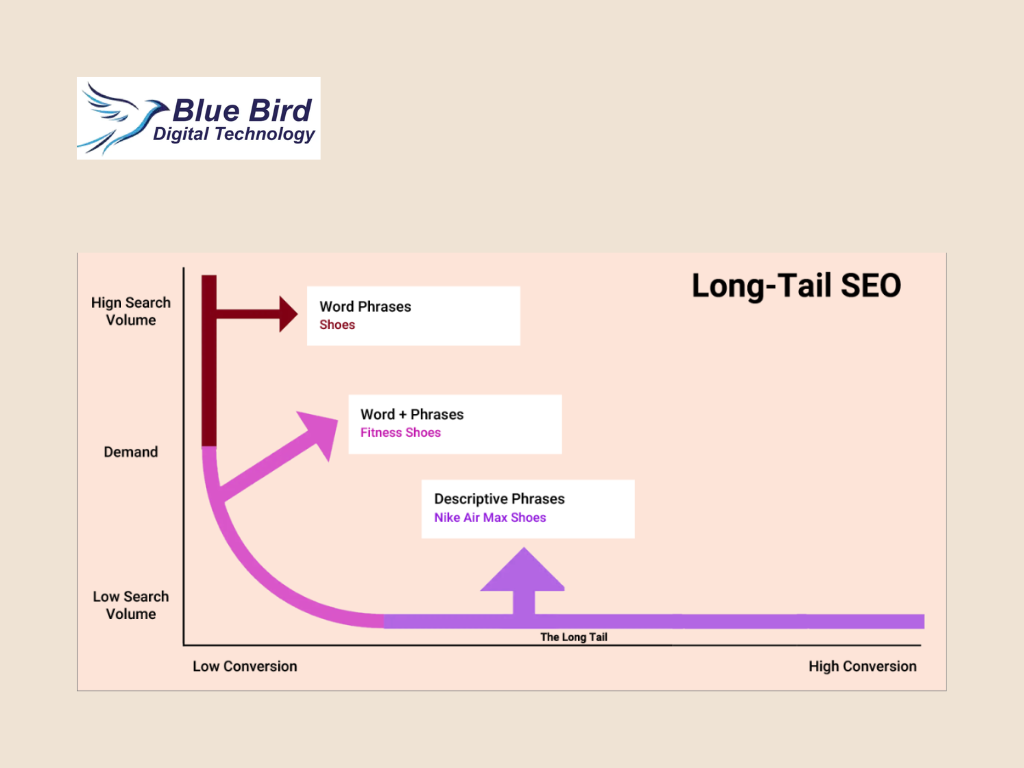
7.1 What are Long-Tail Keywords?
Long-tail keywords are more specific phrases that usually have lower search volume but higher conversion rates because they reflect a more precise user intent.
Example:
-
Short-tail: “running shoes”
-
Long-tail: “best waterproof running shoes for women with flat feet”
7.2 Why Use Long-Tail Keywords?
-
Less Competition: Since these keywords are more specific, fewer websites target them.
-
Higher Conversion: Users searching for very specific terms are usually closer to making a purchase or decision.
-
Easier to Rank: Focusing on less competitive keywords can help you rank faster and with less effort.
7.3 How to Find Long-Tail Keywords:
-
Use Google Suggest: Type your seed keywords into Google and see what suggestions come up.
-
AnswerThePublic: This tool visualizes long-tail questions people ask around a keyword.
-
SEMrush / Ahrefs: These tools have filters to find long-tail variations of popular keywords.
7.4 Incorporating Long-Tail Keywords into Your Strategy:
-
Blog Posts: Write detailed, answer-focused content to target long-tail queries.
-
Product Descriptions: Use long-tail keywords in product titles and descriptions.
-
FAQs: Create a separate FAQ page to target specific long-tail questions.
🔎 SEO Insight: A well-optimized page with long-tail keywords can have better user engagement because it answers specific, high-intent queries.
📘 Chapter 8: Keyword Clustering and Topical Authority
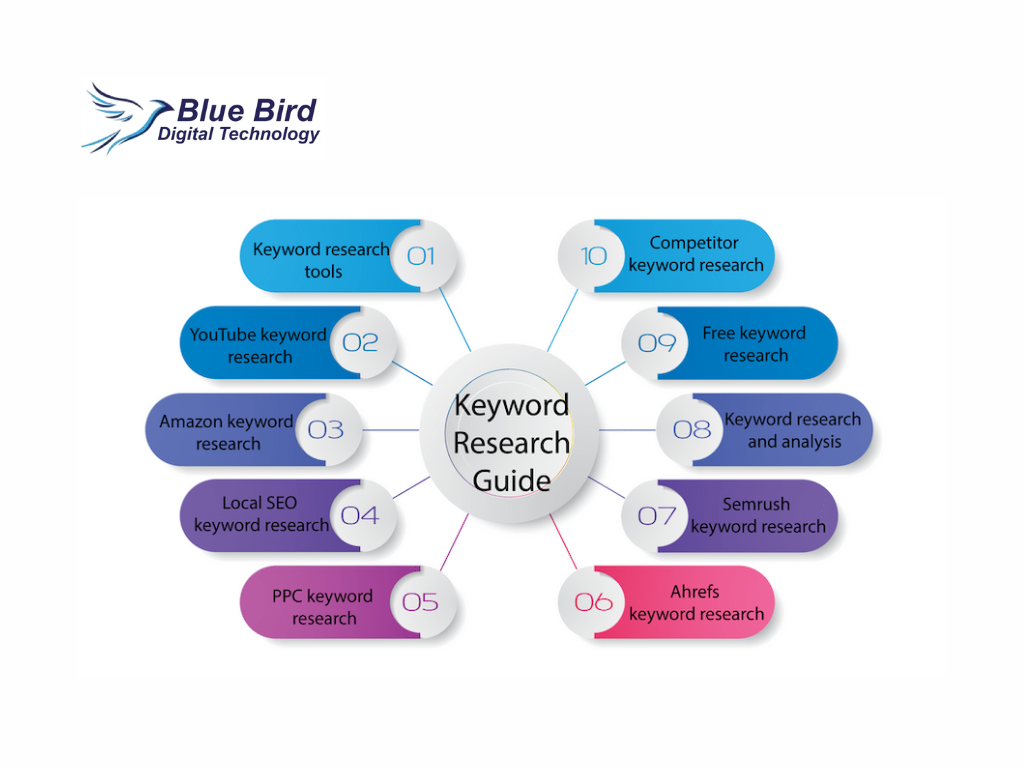
8.1 What is Keyword Clustering?
Keyword clustering is the process of grouping similar keywords based on a common theme. Instead of focusing on individual keywords, you build out content clusters — sets of pages around a specific topic.
Example:
-
Cluster Topic: SEO
-
Pillar Page: “Ultimate Guide to SEO”
-
Supporting Content:
-
“How to Do Keyword Research for SEO”
-
“On-Page SEO Best Practices”
-
“What is Link Building in SEO?”
-
-
8.2 Why Keyword Clustering Works:
-
Improves Authority: Search engines can see your site as an authority on a topic when you create multiple pages about it.
-
Supports Internal Linking: Content clusters allow for an internal linking structure where each page supports the other.
-
Better SEO Outcomes: Clusters make it easier to rank for related keywords, and Google rewards comprehensive, well-structured content.
8.3 How to Build a Content Cluster:
-
Create a Pillar Page: This is the main page that covers the broad topic in depth.
-
Create Cluster Content: These are detailed, specific blog posts or pages that support the pillar page.
-
Linking Strategy: Internal links should point from cluster content to the pillar page and vice versa.
8.4 Case Study Example:
-
Pillar Page: “Complete Guide to SEO”
-
Cluster Pages:
-
“SEO Keyword Strategy”
-
“On-Page SEO Techniques”
-
“SEO for E-Commerce Websites”
-
📘 Chapter 9: Competitor Keyword Analysis

9.1 Why Competitor Keyword Analysis Matters
Understanding what keywords your competitors rank for is critical in shaping your own strategy. This helps you:
-
Discover new keyword opportunities
-
Identify content gaps
-
Understand the competitive landscape
Competitor keyword analysis can reveal the search terms that are driving traffic to your competitors’ websites, which you can then target or use to adjust your content strategy.
9.2 How to Analyze Competitor Keywords:
-
Identify Your Top Competitors: Find the websites that directly compete for the same audience or services.
-
Use SEO Tools: Tools like SEMrush, Ahrefs, and Moz offer detailed competitor reports.
-
For example, Ahrefs can show the keywords your competitors are ranking for, their estimated traffic, and the ranking position of each keyword.
-
-
Keyword Gap Analysis: Use these tools to compare keyword lists and identify keywords that your competitors rank for, but you don’t.
-
Example: If your competitor ranks for “best SEO tools,” but you don’t, add this to your target list.
-
9.3 What to Look for in Competitor Analysis:
-
High-Volume Keywords: Keywords with significant search volume that your competitors are ranking for.
-
Long-Tail Keywords: Hidden gems that competitors rank for but you might have missed.
-
Content and Backlink Strategies: See how your competitors are structuring their content around these keywords and where their backlinks are coming from.
🔍 Pro Tip: Competitor analysis isn’t just about copying — it’s about finding gaps where you can provide more value.
📘 Chapter 10: Tracking Keyword Performance

10.1 Why Tracking Keywords is Crucial
Tracking keyword performance allows you to see how well your keywords are doing over time, helping you:
-
Adjust your SEO strategy
-
Optimize underperforming content
-
Measure your ROI for SEO efforts
10.2 Tools for Keyword Tracking:
-
Google Search Console: Provides data on impressions, clicks, and average ranking positions for keywords.
-
Tip: Monitor your “Average Position” for valuable keywords to see how they’re performing in the SERPs.
-
-
Ahrefs/SEMrush: These tools offer keyword tracking for specific keywords over time. They show ranking changes, traffic estimates, and keyword difficulty.
-
Rank Tracker: Tools like AccuRanker or SERPWatcher provide easy-to-understand dashboards for tracking specific keywords on a daily or weekly basis.
10.3 How to Track Keyword Performance:
-
Monitor Ranking Changes: Look at how your rankings for each keyword fluctuate over time. Track if your position is improving or declining.
-
Track Impressions and Clicks: Use Google Search Console to measure impressions (how often your page appears in search) and clicks (how often users click through).
-
Analyze Traffic: Compare the traffic driven by each keyword to determine if they’re contributing to your overall growth.
-
Measure Conversions: Track the conversion rate for each keyword, particularly for transactional keywords like “buy shoes online.” This will help you gauge the ROI of your keyword strategy.
🚀 Pro Tip: If a keyword is moving down in the rankings, evaluate if it needs additional content optimization or new backlinks.
📘 Chapter 11: Common Mistakes in Keyword Strategy
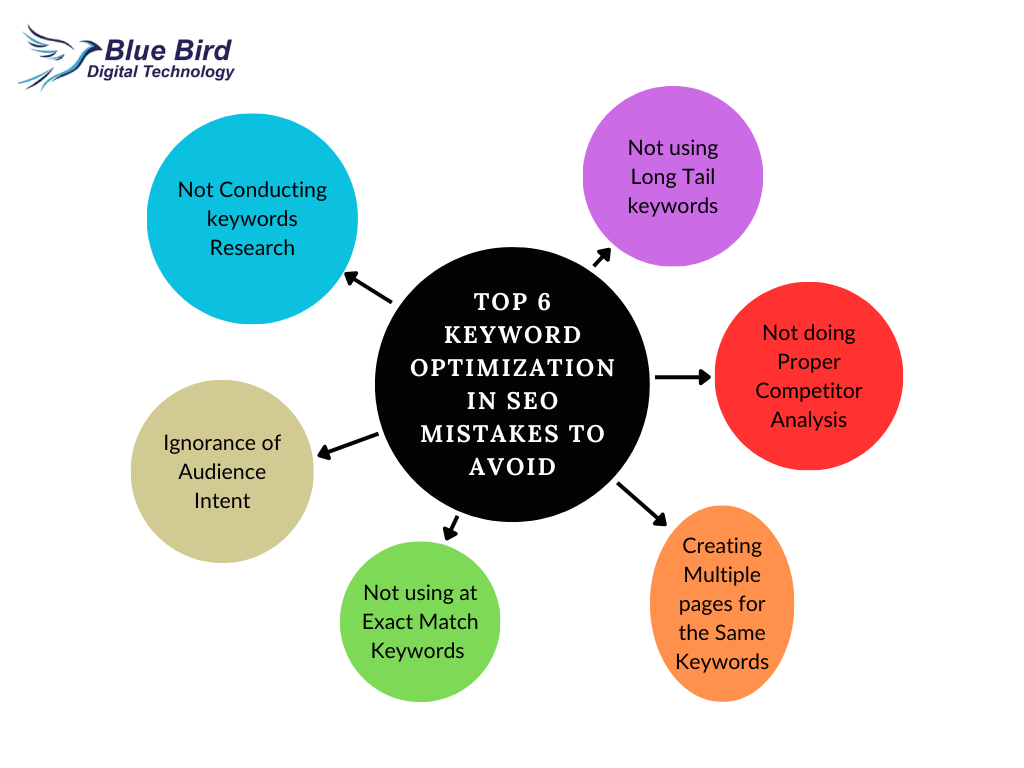
11.1 Keyword Stuffing
Using a keyword too frequently within your content can result in keyword stuffing, which makes your content unreadable and violates Google’s guidelines. Over-optimization can hurt your rankings.
Fix: Focus on semantic SEO — use related terms and ensure your content flows naturally.
11.2 Ignoring Search Intent
Targeting keywords without considering the user intent behind them can result in poor engagement and lower rankings.
Fix: Align your content to user intent (informational, transactional, navigational) for better rankings and higher conversions.
11.3 Not Using Long-Tail Keywords
Some sites ignore the potential of long-tail keywords because they have lower search volume, but they often convert better.
Fix: Incorporate long-tail keywords to target high-intent searches and drive more qualified traffic.
11.4 Overlooking Local SEO
Not considering local SEO can hurt businesses that serve specific regions or cities. If you ignore location-based keywords, you miss out on local traffic.
Fix: Add geo-targeted keywords for your region and make sure your business is listed in Google My Business and local directories.
11.5 Focusing Only on High-Volume Keywords
Chasing only high-volume, highly competitive keywords can be frustrating if you don’t have the authority to rank for them.
Fix: Use a mix of high-volume and low-competition long-tail keywords for a balanced strategy.
📘 Chapter 12: Advanced Keyword Research Techniques
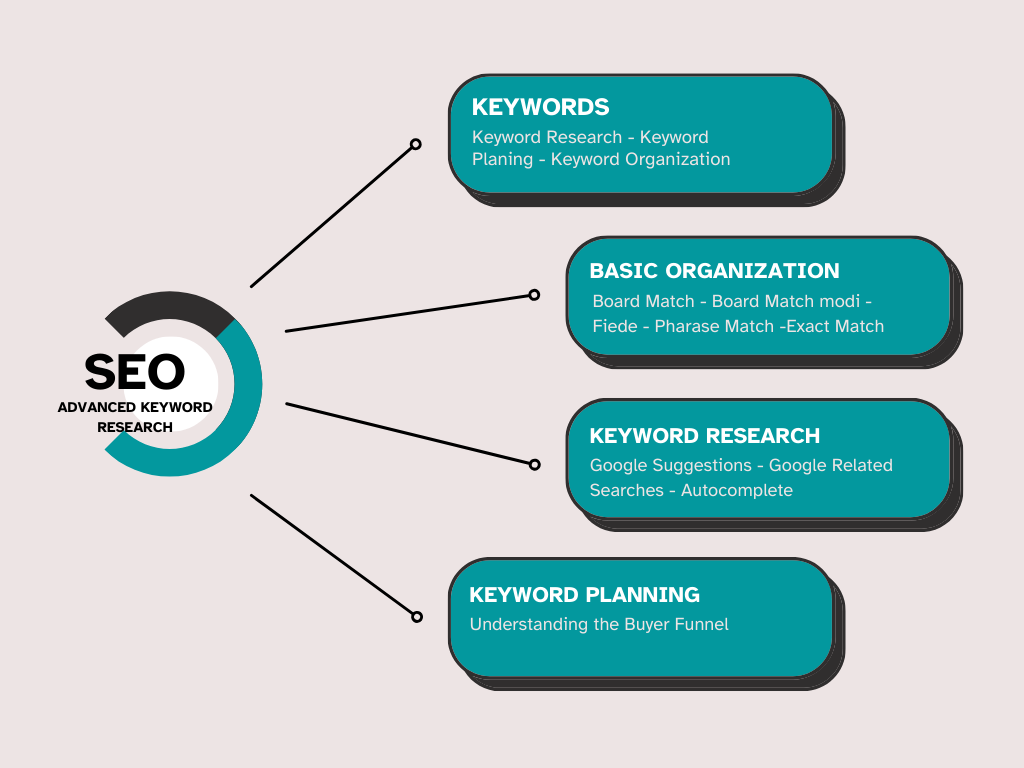
12.1 Leveraging Google’s “Related Searches”
Google’s Related Searches section at the bottom of the search results page provides additional ideas and variations of keywords.
-
How to use it: After typing in your main keyword, scroll to the bottom of the results page and explore the related queries. These are usually long-tail variations that can help you find hidden gems.
12.2 Using Competitor Content for Inspiration
-
Identify Competitors: Find high-ranking competitors in your niche.
-
Review Their Content: Look at the content that ranks for your target keywords.
-
Find Content Gaps: Compare your competitor’s content against your existing content to find gaps. This is where you can outperform them.
Tool Example: SEMrush’s Content Gap feature allows you to input your website and a competitor’s, and it will identify keywords that the competitor ranks for, but you don’t.
12.3 Semantic Keyword Research (LSI)
Latent Semantic Indexing (LSI) is a concept used by search engines to identify related terms. It helps you go beyond exact matches and target variations of your keywords.
How to Use LSI:
-
Use tools like LSI Graph to generate related terms.
-
Incorporate these related terms naturally in your content to increase the relevance and depth of your pages.
12.4 Using “People Also Ask” (PAA) for Keywords
The People Also Ask box in Google search results is a goldmine for finding questions that users are asking around your topic.
How to Use:
-
Enter your main keyword into Google and examine the questions that appear in the “People Also Ask” section.
-
These can be used to create FAQ-style blog posts or detailed answers on your site.
📈 Pro Tip: Create a series of posts based on “People Also Ask” to build a comprehensive content hub around a topic.
📘 Chapter 13: Monitoring and Adjusting Your Strategy
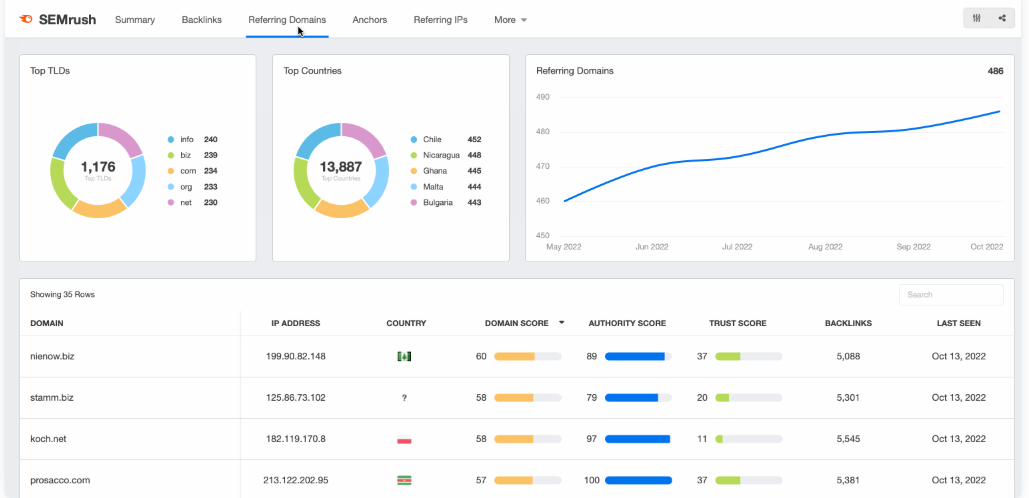
13.1 Importance of Monitoring Keyword Performance
SEO is dynamic. Keyword rankings can shift due to algorithm updates, competitor activity, or changes in search trends. Monitoring helps you adapt to these changes, optimize existing content, and track your overall SEO success.
13.2 Tools for Monitoring Keyword Performance:
-
Google Search Console: Track keyword impressions, clicks, and average positions.
-
SEMrush/Ahrefs: Keep an eye on keyword rankings, competitor activity, and changes in traffic.
-
Google Analytics: Measure how well your keywords are driving organic traffic and leading to conversions.
-
Rank Tracker Tools: Use tools like AccuRanker or SERPWatcher for daily tracking and reporting.
13.3 How to Adjust Your Keyword Strategy:
-
Review Ranking Fluctuations: If a keyword drops in ranking, check if the page needs further optimization or more backlinks.
-
Refine Target Keywords: Focus more on the high-converting keywords and de-prioritize keywords that bring little traffic or aren’t aligned with user intent.
-
Stay Updated with Google’s Algorithm Changes: Google regularly updates its algorithm. Make sure you’re aware of these updates and adjust your strategy accordingly.
13.4 Refining Content for Better Rankings:
If a keyword isn’t performing well, consider content updates. This can include:
-
Adding more related keywords and variations
-
Improving page speed and user experience (UX)
-
Refreshing outdated content with current data and trends
🔄 SEO Hack: Use content silos to group related pages and interlink them, enhancing topical relevance and authority.
📘 Chapter 14: Case Studies in Keyword Success

14.1 Case Study 1: E-commerce Site Ranking for “Best Running Shoes”
Background: A new e-commerce site selling running shoes wanted to rank for the keyword “best running shoes.”
Challenges: The keyword was highly competitive, and the site was new with little authority.
Strategy:
-
Targeted long-tail variations like “best running shoes for flat feet” and “affordable running shoes for beginners.”
-
Created a detailed comparison page with user reviews and expert opinions.
-
Focused on product pages with schema markup to provide rich results.
Results: Within 6 months, the site ranked on the first page for several long-tail keywords and saw a 120% increase in organic traffic.
14.2 Case Study 2: SaaS Company Ranking for “Project Management Tools”
Background: A SaaS company offering project management software needed to rank for competitive terms like “project management tools.”
Challenges: The market was crowded with big players and high-authority sites.
Strategy:
-
Created pillar content around project management, including subtopics like task management, team collaboration, etc.
-
Focused on creating content clusters around relevant topics like “how to manage remote teams,” “best tools for task delegation,” and “how to integrate project management tools with other software.”
-
Emphasized user intent and created FAQs that answered common questions.
Results: The site increased its rankings for high-competition keywords and significantly boosted conversions by targeting the right long-tail variations.
14.3 Case Study 3: Local Business Ranking for “Plumber in [City Name]”
Background: A local plumbing business wanted to rank for “plumber in [City Name].”
Challenges: The area was competitive, with multiple plumbing services in the city.
Strategy:
-
Focused on local SEO: optimizing the Google My Business profile, adding location-based keywords to pages, and getting local backlinks.
-
Targeted long-tail keywords like “emergency plumber in [City]” and “affordable plumbing service in [City].”
-
Created a series of blog posts addressing common plumbing problems in the area and used local landmarks and zip codes to build geographic relevance.
Results: After 3 months, the business started ranking for several location-based terms and saw a 40% increase in local inquiries.

